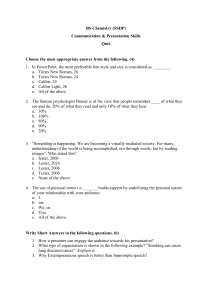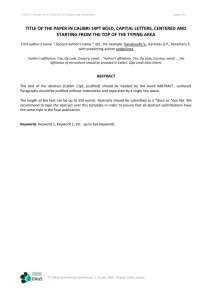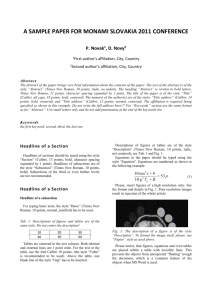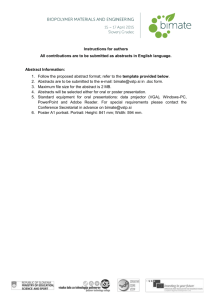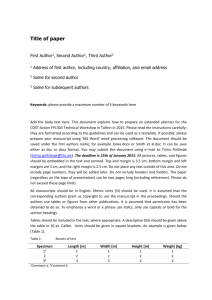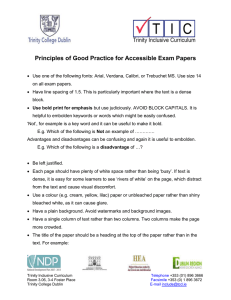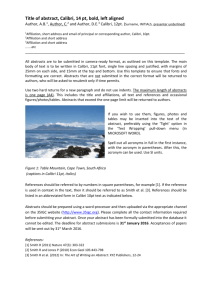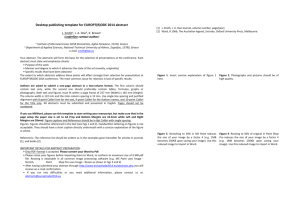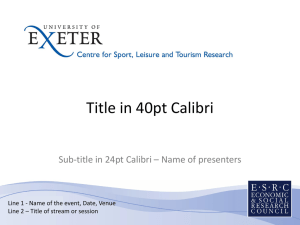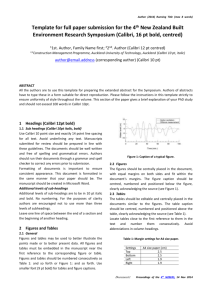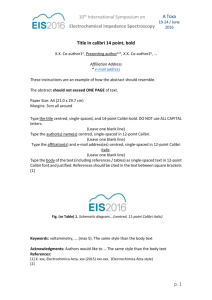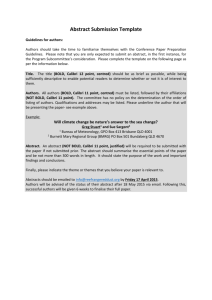Acta Innovations - CBI Pro
advertisement
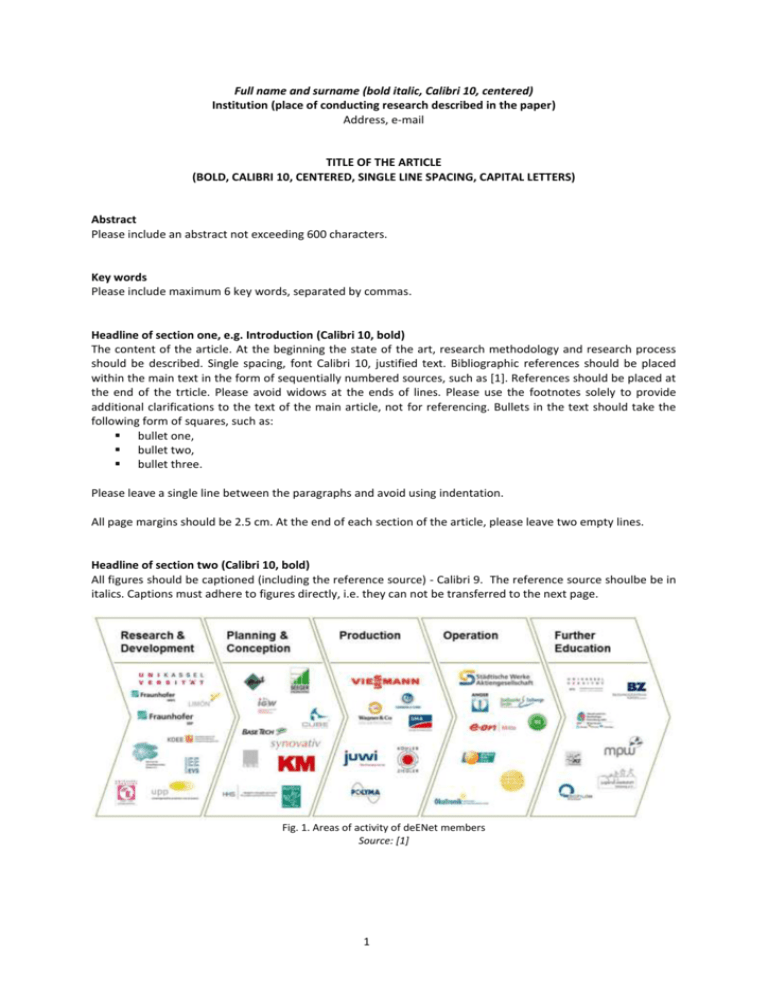
Full name and surname (bold italic, Calibri 10, centered) Institution (place of conducting research described in the paper) Address, e-mail TITLE OF THE ARTICLE (BOLD, CALIBRI 10, CENTERED, SINGLE LINE SPACING, CAPITAL LETTERS) Abstract Please include an abstract not exceeding 600 characters. Key words Please include maximum 6 key words, separated by commas. Headline of section one, e.g. Introduction (Calibri 10, bold) The content of the article. At the beginning the state of the art, research methodology and research process should be described. Single spacing, font Calibri 10, justified text. Bibliographic references should be placed within the main text in the form of sequentially numbered sources, such as [1]. References should be placed at the end of the trticle. Please avoid widows at the ends of lines. Please use the footnotes solely to provide additional clarifications to the text of the main article, not for referencing. Bullets in the text should take the following form of squares, such as: bullet one, bullet two, bullet three. Please leave a single line between the paragraphs and avoid using indentation. All page margins should be 2.5 cm. At the end of each section of the article, please leave two empty lines. Headline of section two (Calibri 10, bold) All figures should be captioned (including the reference source) - Calibri 9. The reference source shoulbe be in italics. Captions must adhere to figures directly, i.e. they can not be transferred to the next page. Fig. 1. Areas of activity of deENet members Source: [1] 1 Tables should be described in a similar way. Table 1. Strengths and weaknesses of deENet network Strenghts Text Weaknesses Text Source: Author’s Figures and tables should not be placed at the end of each part of the article - should always follow them in text. Summary and conclusions The article should cover interpretation of the results as well as logical and reasonable conclusions. Acknowledgements Optional section, containing fro example information on the financing of the studies described in the article. References [1] J. van der Geer, J.A.J. Hanraads, R.A. Lupton, The art of writing a scientific article, J. Sci. Commun. 163 (2010) 51–59. [2] W. Strunk Jr., E.B. White, The Elements of Style, fourth ed., Longman, New York, 2000. [3] G.R. Mettam, L.B. Adams, How to prepare an electronic version of your article, w: B.S. Jones, R.Z. Smith (Eds.), Introduction to the Electronic Age, E-Publishing Inc., New York, 2009, pp. 281–304. 2
